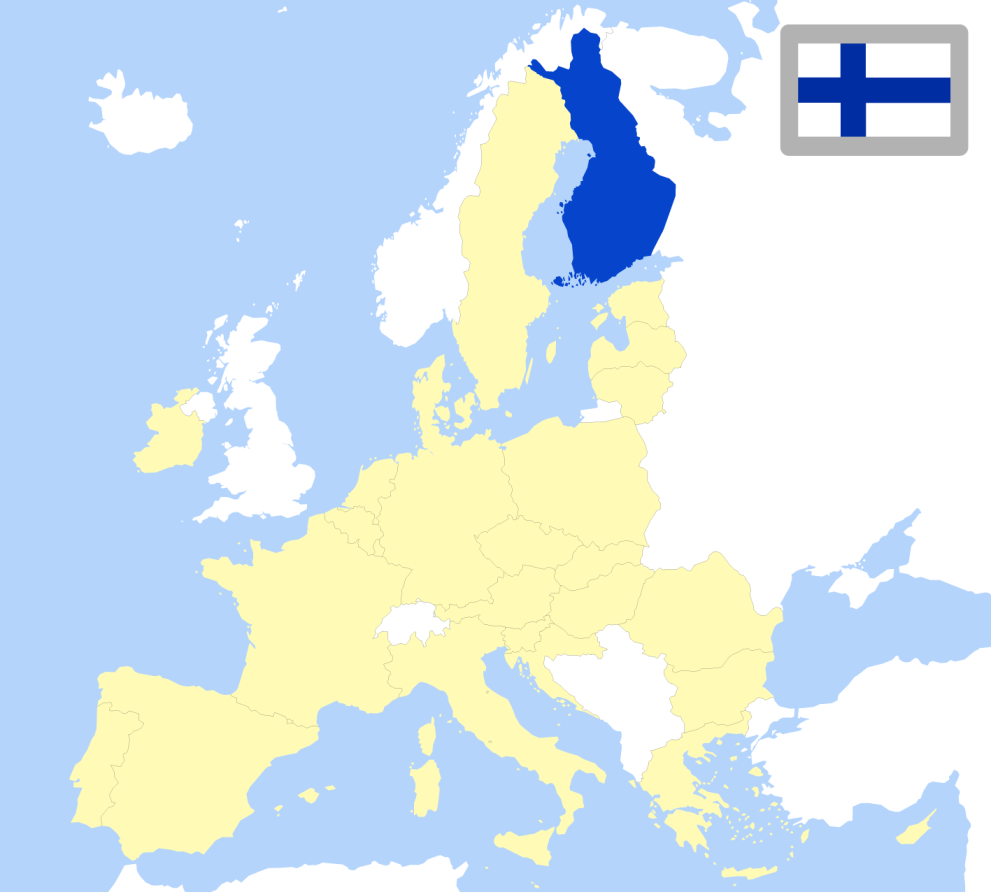Overview

Capital: Helsinki
Official EU language(s): Finnish, Swedish
EU Member State: since 1 January 1995
Currency: euro (€)
Euro area: member since 1 January 1999
Schengen: member since 25 March 2001
Figures:
- Geographical size: 338 363 km2
- Population: 5 635 971
(Source: Eurostat - 2025 figures for geographical size and population)
Political system
Finland is a parliamentary republic with a prime minister, who is the head of government, and a president, who is the head of state. The central government is based in Helsinki and the local governments in the 309 municipalities (towns and cities).
The country is divided into 19 regions and 70 sub-regions. The smallest region, Åland, is an autonomous archipelago in the south-west. The northern Lapland region comprises the Sami Domicile Area, home to around half of Finland’s indigenous Sami people (also known as Lapps or Laplanders).
Trade and economy
Finland ranks tenth in the European Union in terms of GDP per capita with €40 000, well above the EU average (€38 100). It accounts for 1.6% of the EU's total GDP.
(Source: Eurostat - 2023 figures for GDP per capita and GDP)
(Source: Eurostat - 2024 figures for exports and imports)
There are 15 representatives from Finland in the European Parliament. Find out who these Members of the European Parliament are and follow the activities of the European Parliament’s office in Finland.
In the Council of the EU, national ministers meet regularly to adopt EU laws and coordinate policies. Representatives from the Finnish government attend Council meetings focused on their area of responsibility several times a year.
The Council of the EU does not have a permanent, single-person president (like the Commission or Parliament). Instead, its work is led by the country holding the Council presidency, which rotates every 6 months.
During these 6 months, ministers from that country's government chair and help determine the agenda of Council meetings in the different policy areas, and facilitate dialogue with the other EU institutions.
Dates of Finnish presidencies:
Jul-Dec 1999 | Jul-Dec 2006 | Jul-Dec 2019
The European Commissioner nominated by Finland is Henna Virkkunen who is the Executive Vice-President for Tech Sovereignty, Security and Democracy.
The Commission is represented in each EU country by a local office, called a "representation". Find out more about the Commission's representation in Finland.
Finland has 9 representatives on the European Economic and Social Committee. This advisory body – representing employers, workers and other interest groups – is consulted on proposed laws, to get a better idea of the possible changes to work and social situations in different countries.
Finland has 9 representatives on the European Committee of the Regions, the EU's assembly of regional and local representatives. This advisory body is consulted on proposed laws, to ensure these laws take account of the perspective from each region of the EU.
Finland also communicates with the EU institutions through its permanent representation in Brussels. As Finland's "embassy to the EU", its main task is to ensure that the country's interests and policies are heard and pursued as much as possible in the EU.
Budgets and funding
How does Finland benefit from the EU budget?
The EU budget is the tool to ensure that Europe remains a democratic, peaceful, prosperous and competitive force. The EU uses it to finance its priorities and big projects that most individual EU countries could not finance on their own.
The benefits of EU membership significantly exceed the size of the EU budget contributions and the examples are many. All Member States benefit from being part of the Single Market, a shared approach to the common challenges of migration, terrorism and climate change, and concrete gains like better transport infrastructure, modernised and digitalised public services and cutting-edge medical treatment.
How much each EU country pays into the EU budget is calculated fairly. The larger your country's economy, the more it pays – and vice versa.
The EU budget is not about giving and taking – it’s about collectively contributing to making Europe and the world a better place for us all.
EU budget spending and revenue per country and per year
EU-funded projects in Finland
Money from the EU budget helps fund programmes and projects in all EU countries – for example to build roads, subsidise researchers and protect the environment.
Find out more about how Finland benefits from EU funding and recovery funds in your country or region.
